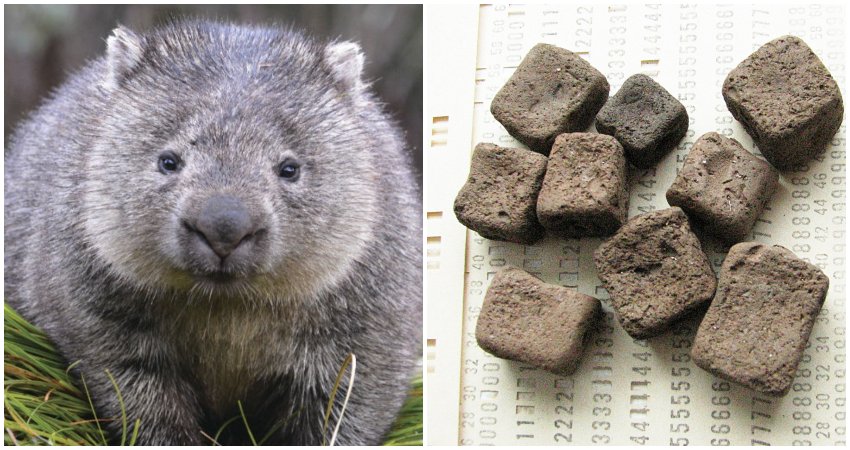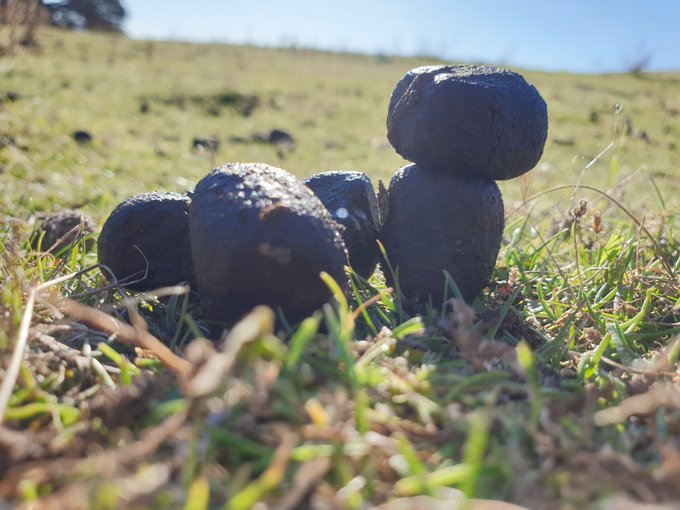Have you ever wondered what animal poops cubes? While it might sound like something straight out of a science fiction movie, it’s a real and interesting phenomenon. The animal in question is the wombat, a marsupial native to Australia, known for its unique cube-shaped poop. In this article, we’ll explore why wombats poop cubes, how their digestive systems work, and whether other animals share this quirky trait.

The animal that is most famous for pooping cubes is the wombat. These creatures are small, burrowing animals that look a little like a cross between a teddy bear and a small bear. Wombats are herbivores and eat a variety of plants, including grasses, roots, and leaves.
Wombat poop has an interesting and unique feature: it is cube-shaped, which is incredibly rare in the animal kingdom. Most animals, including humans, produce round or oval-shaped feces, but wombats’ poop comes out in neat, distinct cubes.
The process of creating cube-shaped poop starts with the wombat’s digestive system. Wombats have a slow metabolism, which means food stays in their digestive tract for a long time — about 14 to 18 hours. This long digestive period allows the wombat’s body to extract as many nutrients as possible from the plants they eat.
The key to cube-shaped poop lies in the wombat’s intestines. Their intestines are extremely long and have a unique, uneven texture that causes the poop to form into cubes as it passes through. Wombats’ intestines are segmented with areas that have different levels of elasticity. These areas shape the stool, forcing it into sharp, angular shapes. The last part of their intestines has a series of tightly packed muscles that give the poop its final cube shape.

You might be wondering: why would wombats develop the ability to poop cubes in the first place? There are a couple of theories.
Territorial Marking: Wombats use their feces to mark their territory. The cube shape allows the poop to stay in place rather than rolling away, which makes it easier for other wombats to find and smell. The sharp corners of the cubes help the poop stay put, ensuring that it sends a clear message to other wombats about who controls the area.
Efficient Digestion: The cube shape may also help wombats conserve water. Since their intestines are so efficient at extracting nutrients, the cubes may represent a highly compact form of excrement that conserves water — something important in the dry Australian outback where wombats live.
While wombats are the most well-known animals that poop cubes, other animals also produce unusual excrement. However, none have quite the same cube-shaped poop as wombats. Some animals, like certain species of rodents, produce poop with more irregular shapes, and others, such as sloths, have slower digestion processes that also lead to distinctively shaped feces.
But when it comes to cubes, wombats really are in a class of their own.
Animal feces, while often overlooked, plays a crucial role in biological communication. For wombats, poop is not only a way of marking territory but also an important part of their survival strategy. Animals use feces in a variety of ways, including:
Marking boundaries: Many animals, from wombats to lions, use feces to communicate territorial boundaries. By leaving their poop in certain areas, they send a message to other animals that the space is already claimed.
Attracting mates: Some animals also use their poop as a way to attract mates. The scent and visual signals left by feces can help animals find a suitable partner.
Digestive health: For animals like wombats, the shape and consistency of their poop indicate how well their digestive systems are functioning. Scientists study animal poop to learn about their health, diet, and environmental adaptations.
Wombats' poop is about the size of a dice! Each cube is approximately 2–5 cm in length.
The cube-shaped poop is so unique that scientists have studied it in detail to understand how it forms and what it means for wombats’ survival.
Wombat poop is actually dry and can be found in piles near their burrows, often stacked neatly in rows.
Wombat poop is a fascinating example of how evolution works in the animal kingdom. It’s not just a quirky trait but a highly specialized adaptation that helps wombats survive in their environment. Whether it’s for territorial marking, water conservation, or simply the way their intestines are structured, the cube-shaped poop of wombats is an interesting feature that makes them even more unique.
And while wombats are the stars of the cube-poop world, it’s important to remember that animal poop in general has a significant role in their biology, communication, and survival. So the next time you think about poop, consider the interesting and sometimes surprising ways that different animals use it to thrive.
In conclusion, while the question of “What animal poops cubes?” may sound funny or odd at first, it’s actually a fascinating part of the wombat’s biology that has a significant purpose in nature. These creatures have adapted in unique ways to survive and thrive in their environment, and their quirky poop is just one of the many fascinating details that make wombats special.
We created this article in conjunction with AI technology, then made sure it was fact-checked and edited by a Animals Top editor.